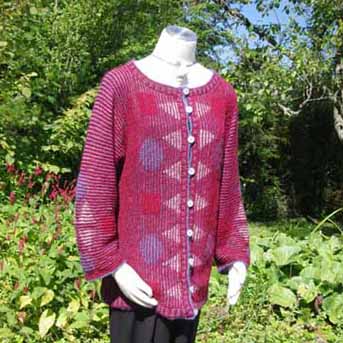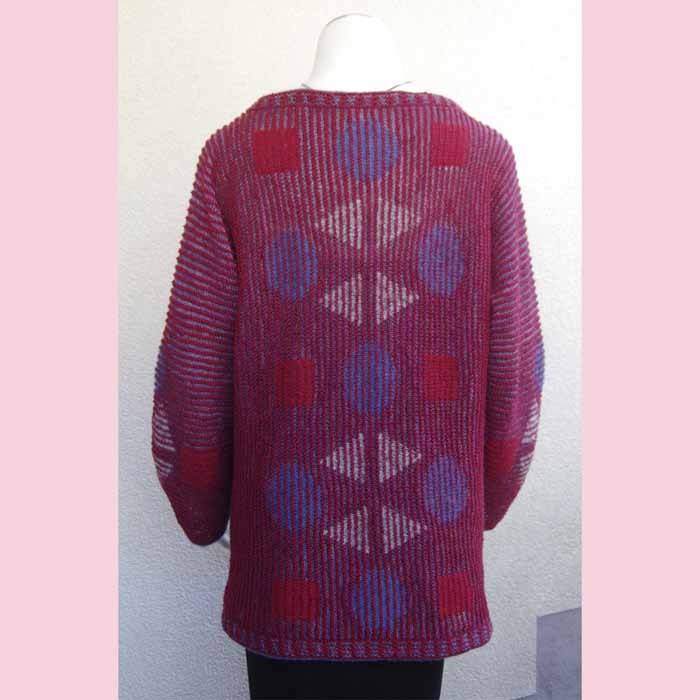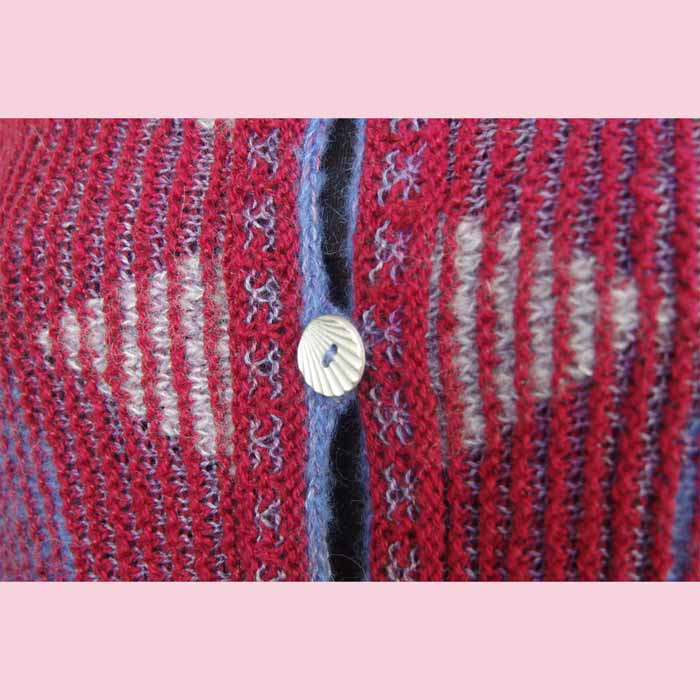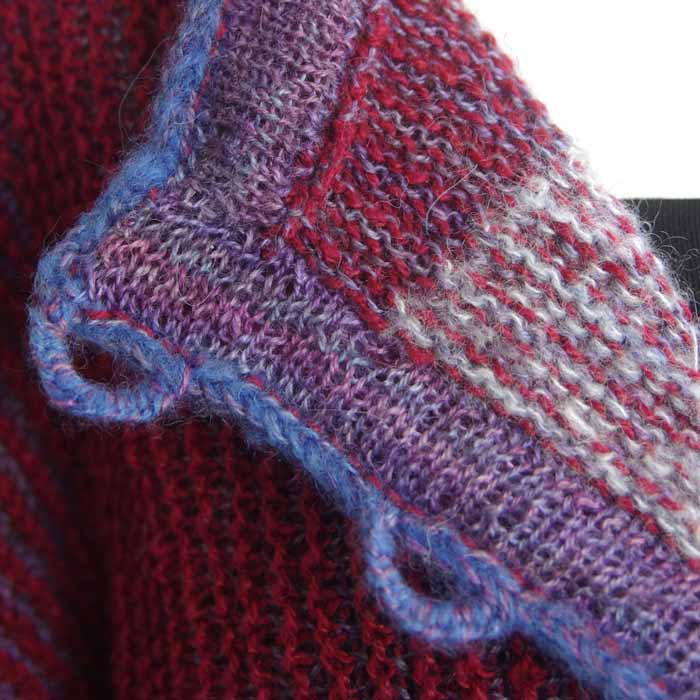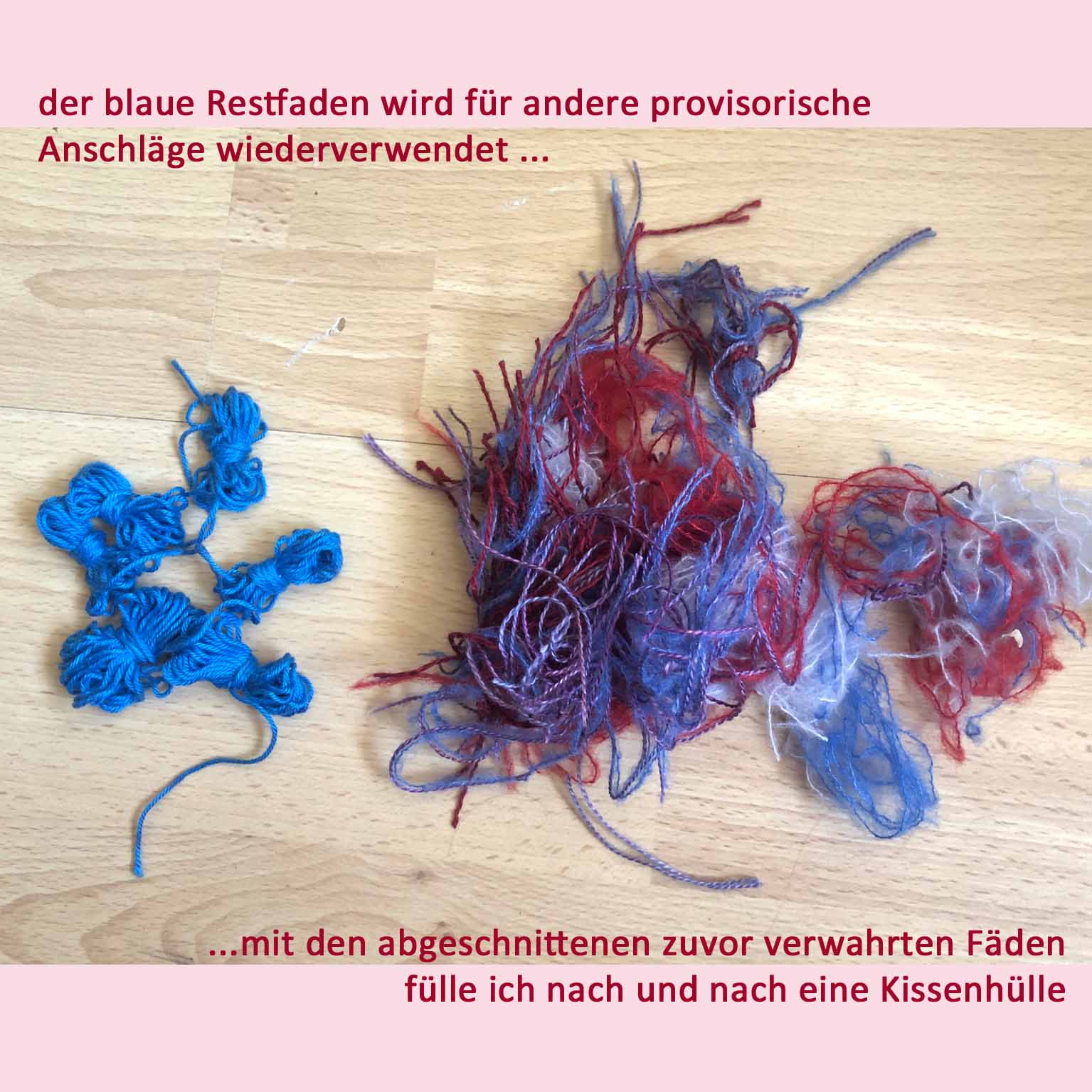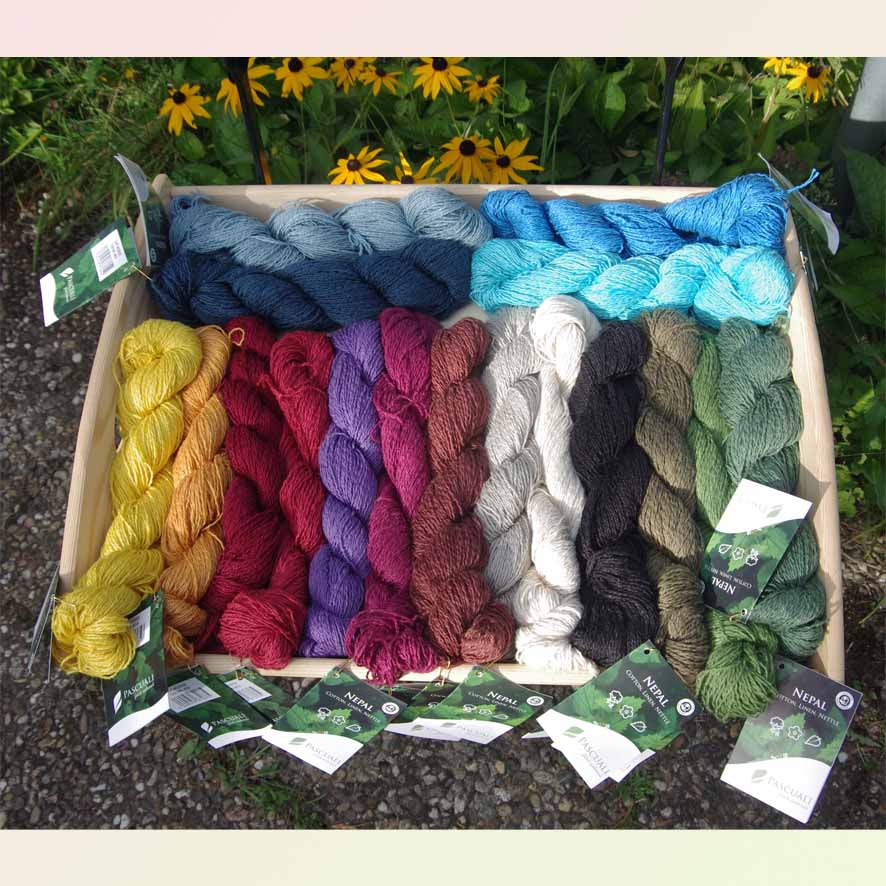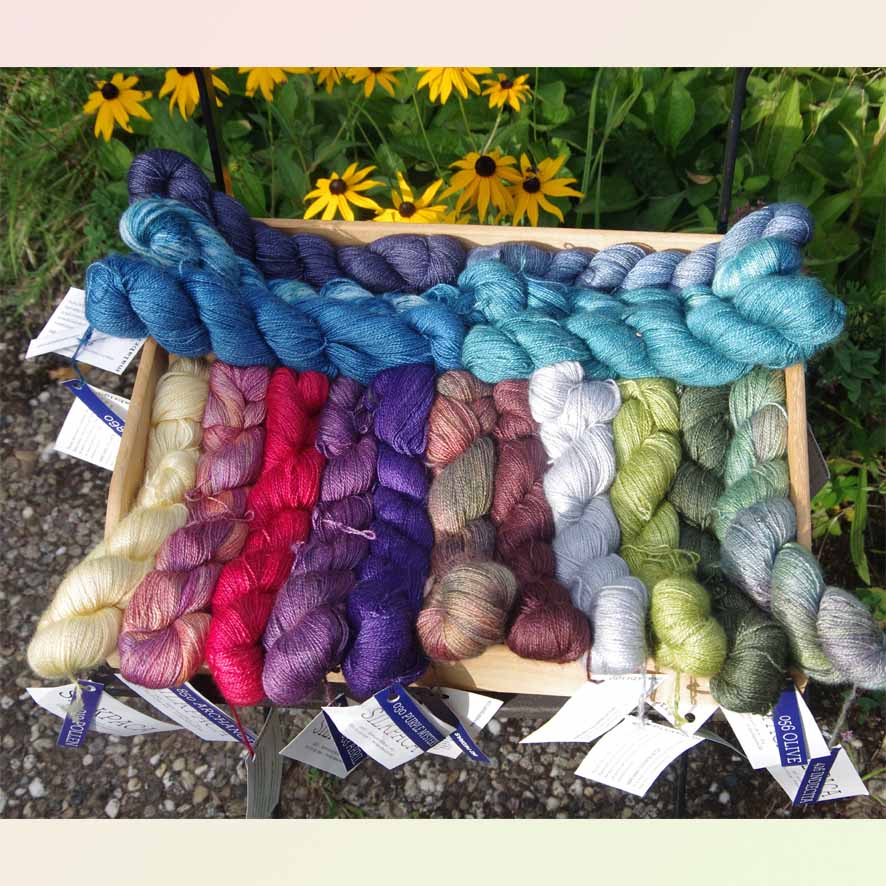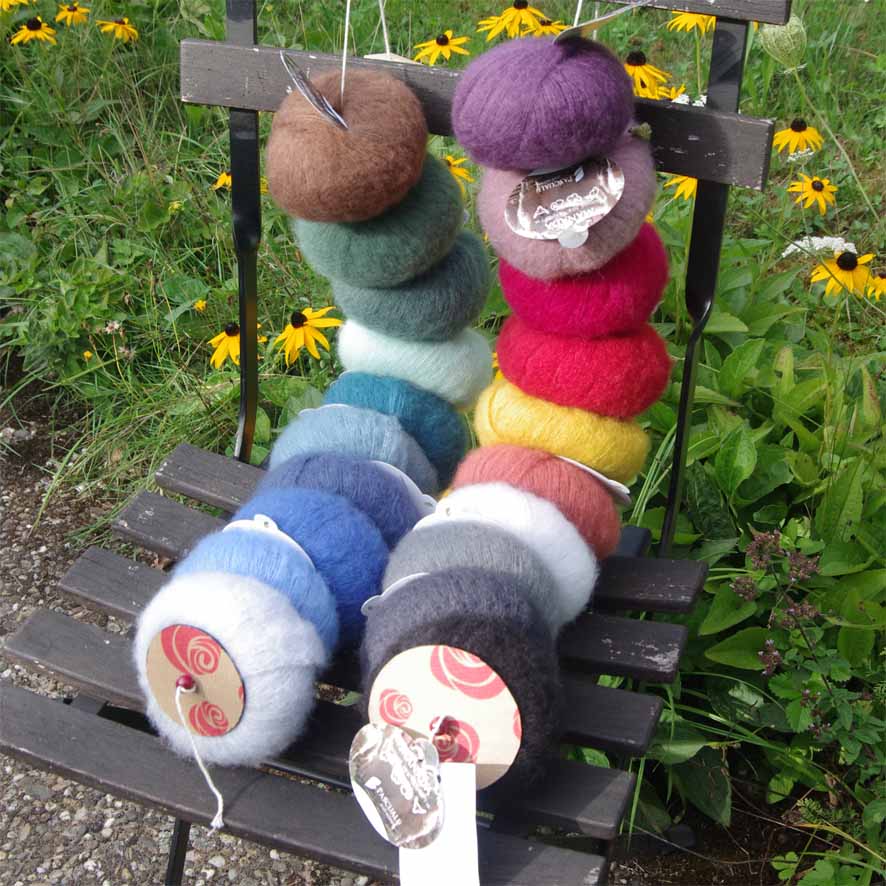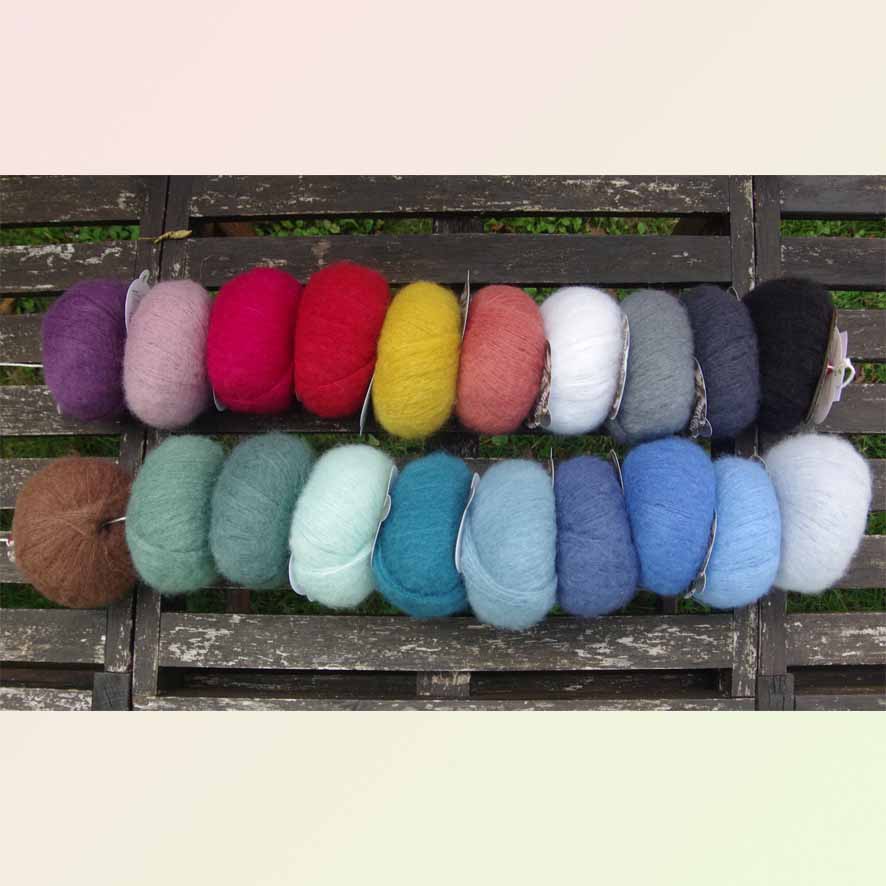Ähnliche Produkte

Anleitung: „Happy Ringlets“ Jumper / Nadel 3 / Gr XXS – 4XL / unisex / Raglan Shoulders / top down, nahtlos – seamless

Anleitung: „Twisted Summer Lace“ Rock – Studio Linen – Rock in A-Form – Länge und Weite variabel – Nadel 4 – Zopfmuster – verschränkte Maschen

Anleitung: „Twisted Summer Stitches“ Top StrickStrand – Studio Linen – Nd 4 – Verschränkte Maschen – Lace – twisted Stitches

Anleitung: „Pearl Strings“ Scarf – Rechteckschal – Ajourmuster – Borten – Lace Nd 3-4 – Mohair Bliss
Anleitung: Theodors Mond Strickjacke/ Pullover – Intarsienmuster – Sommer – Leinen, Baumwolle, Seide, Alpaca uvm. in drei Größen M-L [S/XL]
7,00 €
Beschreibung
Beschreibung
Die Anleitung für diese kuschelige, schöne, halbtransparente Jacke ist mit Skizzen und Fotos 6 DinA4 Seiten lang, die Strickschriften sind auf 3 extra DinA4 Seiten. Das klingt viel, die Techniken sind allerdings nicht schwierig – selbst das Intarsienstricken ist hier in einer einfacheren Form! Du findest die Jacke in 3 Größen: M-L [S/XL], in der Länge unterscheiden sich die Jacken nicht, nur die Ärmellänge und die Weite variiert.
Welches Material brauchst Du dazu?
Nepal 3 Knäuel à 50 g – Brennnessel, Leinen, Baumwolle
Silkpaca drei Stränge à 50 g – Alpaka, Seide
Manada 3 Farben je 25 g -Yak, Merino, Seide, Mohair
das sind insgesamt 8 verschiedene Grundmaterialien – wunderbar auf der Haut – da trage ich gerne nur ein dünnes Top drunter!!! :-) Ich liebe diese Jacke :-)
Welches Werkzeug? Sonstiges Material ?
80 cm Rund-Nadel Stärke 3, mind. eine Hilfs-Rundnadel Stärke 2-3 (mehr Nd machen es leichter) , mind. 7 Bobbins (mehr machen es leichter) mit 7 Sicherheitsnadeln (oder verschließbaren Maschenmarkierern) kann man hier im Shop bekommen(=link), verschiedene Restfäden, Wollnadel zum Vernähen der Fäden, Häkelnadel für den Anschlag, 9 leichte Knöpfe mit dem Durchmesser ca. 1,8 cm
An Stricktechnik kommt vor: rechte und linke Maschen, Abheben von Maschen, provisorischer Anschlag und dessen Auflösung, Zunahmen: zwei Maschen aus einer und Aufstricken von Maschen am Rand, sowie Icord-Rand (Kordelrand) und wahlweise Maschenstich oder Matratzenstich.
10 cm x 10 cm = 22M x 42R
Die geometrischen Farbflächen entstehen durch „geschummelte“ Intarsientechnik – jeder Kreis, jedes Quadrat und jedes Dreieck werden mit einem eigenen Knäulchen gestrickt. Dazu brauchst Du pro Knäulchen einen „Bobbin“= ein kleines Kärtchen aus z.B. Karton auf den Du einen 2-4,20 m langen Faden wickelst und das Du auf der Rückseite des Gestricks mit je einer Sicherheitsnadel oder einem verschließbarem Maschenmarkierer befestigst. Dann geht das Stricken ganz einfach ohne sich verwirrende Fäden!
Bist Du Dir wegen der Farbwahl nicht sicher, dann schicke ich Dir gerne Skizzen zum Anmalen für Farbproben (für Dein persönliches Mood-Board) und natürlich berate ich Dich auch gerne.
Beim Zusammenstellen frage Dich:
welche Farbe steht mir?
zu welchem Rock, zu welcher Hose, zu welchem Rolli soll die Jacke passen?
Die Hauptfarbe ist Nepal – meine aktuelle Auswahl siehst Du hier auf dem einen Foto mit Tablett, bei dem links ein sonnengelber Strang liegt.
Dazu suchst Du Dir Deine Farbe in (transparenterem) Silkpaca, auch diese Stränge habe ich Dir auf einem Tablett fotografiert. Das kann farblich Ton in Ton sein oder auch eine Kontrastfarbe.
Erst dann suche Dir die drei Farben in Manada. Das ist die Wolle in „Wollballform“, die auf den Fotos aufgefädelt auf einem Stuhl bzw einer Bank liegt. Die Farbe, die Du in die Kanten einstrickst, von der brauchst Du 2 Knäuel Manada.
Bei meiner Jacke sind die roten Quadrate weniger zu sehen, da sie Ton in Ton zur bordeauxfarbenen Nepal sind – das sollte Dir beim Aussuchen der Manadafarben klar sein: je stärker der Kontrast zu Nepal ist, je weiter im Vordergrund liegen die geometrischen Figuren.
Natürlich kannst Du diese Jacke auch als Winterjacke aus wärmender Wolle stricken, die Größe verändert sich dann leicht! Oder Du strickst einen Pulli, dann macht es weniger Arbeit am Bende, da Du keine Verschlussblende brauchst!
warme Materialmöglichkeiten:
statt Silkpaca „Lace“ von malabrigo, oder „Aurora“ von Rosários4, für die geometrischen Formen würde ich dann entweder Manada doppelt nehmen, oder Wolle einarbeiten wie Merino Baby, Iaque, Merino D`Arles … sehr viele Möglichkeiten
statt Nepal würde ich doppelfädig Manada/ Merino Baby, einfädig Silky Merino oder Alpaca Fino wählen
Die Anleitung verkaufe ich nur zusammen mit der dafür benötigten Wolle Deiner Wahl.
Kaufst Du diese Wolle, oder andere Wolle ab 75 €, kostet die Anleitung nichts. Ansonsten kostet das PDF 7 € extra.
Hier im Shop gibt es auch einen „Theodors Mond Schal“, ein ärmelloses Sommeroberteil ist in Arbeit!
English
The instructions for this cozy, beautiful, semi-transparent jacket has 6 DinA4 pages long with sketches and photos, the knitting charts are on 3 extra DinA4 pages. That sounds like a lot, but the techniques are not difficult – even intarsia knitting is in a simpler form here! You will find the jacket in 3 sizes: M-L [S/XL], the jackets do not differ in length, only the sleeve length and width vary.
What material do you need for this?
Nepal 3 balls of 50 g each
Silkpaca one strand 50 g
Manada 3 colors 25 g each – that’s a total of 8 different basic materials: silk, cotton, nettel, linen, merino, yak, alpaca, mohair – wonderful on the skin – I like to just wear a thin top underneath!!! :-) I love this jacket :-)
Which toosl? Other Material ?
80 cm circular needle size 3, at least one auxiliary circular needle size 2-3 (more needles make it easier), at least 7 bobbins (more make it easier) with 7 safety pins (or lockable stitch markers) can be found here in the shop (=link), various leftover yarn, wool needle for sewing the threads, crochet hook for the cast, 9 light buttons with a diameter of approx. 1.8 cm
The knitting technique used is: right and left stitches, slipped stitches, crochet provisional cast-on and its unraveling, increases: two stitches from one and knitting stitches out of the edge, as well as icord BO and optionally kitchener or or mattress stitch.
10cm x 10cm = 22M x 42R
The geometric coloured areas are created using a “cheated” intarsia technique – each circle, square and triangle is knitted with its own tiny ball. To do this, you need a “bobbin” for each tiny ball of yarn = a small card made of cardboard, for example, onto which you wind a 2-4.20 m long thread and which you attach to the back of the knitted fabric with a safety pin or a lockable stitch marker. While knitting that is very easy without confusing threads!
If you are not sure about your choice of colour, I will be happy to send you sketches to paint for color samples (for your personal mood board) and of course I will be happy to advise you.
When putting it together, ask yourself:
which colour suits me?
Which skirt, which pants, which shirt should the jacket go with?
The main color is Nepal – you can see my current selection here in the one photo with a tray, where there is a sunny yellow strand on the left.
As second colour, you look for your color in (more transparent) Silkpaca, I also photographed these strands for you on a tray. This can be tone on tone or a contrasting color.
Only then look for the three colors in Manada. This is the wool in the shape of a “wool ball” that is strung on a chair or bench in the photos. You will need 2 balls of Manada for the color that you use also for knitting the borders/ edges.
On my jacket, the red squares are less visible because they are tone-on-tone with the burgundy Nepal – have this in mind when choosing the Manada colors: the stronger the contrast to Nepal, the further in the foreground the geometric figures are.
Of course you can also knit this jacket as a winter jacket made of warm wool, the size will then change slightly eventually! Or you knit a sweater, then it takes less work in the end because you don’t need a fastening edge!
warm material options:
Instead of Silkpaca you can choose “Lace” from Malabrigo, or “Aurora” from Rosários4, for the geometric shapes I would either use Manada as double thread, or wool like Merino Baby, Iaque, Merino D’Arles… lots of possibilities
Instead of Nepal, I would choose double-thread Manada/Merino Baby, single-thread Silky Merino or Alpaca Fino
I only sell the instructions together with the wool of your choice required for it.
If you buy this wool, or other wool from €75, the instructions cost nothing. Otherwise the PDF costs €7 extra.
Here in the shop there is also a „Theodor’s Moon Scarf“, a sleeveless summer top is in works!
Zusätzliche Informationen
| Größe | 21 × 29,7 × 0,2 cm |
|---|

